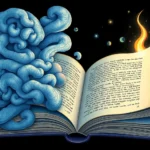Tips For Translating Dream Symbolism

Dreams can be mysterious and confusing. They often contain symbolic meanings that can help us understand our feelings, thoughts, and experiences better. Learning how to interpret these symbols is essential for personal growth and insight. In this post, we will explore tips for translating dream symbolism to help you uncover the hidden messages in your dreams.
About Dream Symbolism
Key Characteristics
Dream symbolism refers to the use of images, objects, and experiences in dreams to convey deeper meanings. Each symbol can represent various ideas or emotions based on your personal experiences and cultural background. Here are some key characteristics of dream symbolism:
- Unique to the Dreamer: What a symbol means can vary from person to person. For example, a snake might represent danger to one person but transformation to another.
- Emotional Resonance: Symbols often evoke strong feelings. Pay attention to how you feel during the dream, as this can provide crucial clues about its meaning.
- Context Matters: The situation surrounding the symbol in the dream is important. The same symbol can mean different things in different contexts.
Symbolic Meaning
Understanding the symbolic meanings of common dream elements can help you translate your dreams more effectively. Here are some widely recognized symbols and their potential meanings:
- Water: Represents emotions and the subconscious. Calm water can signify peace, while rough water may indicate turmoil.
- Flying: Often symbolizes freedom, escape, or a desire for a new perspective.
- Chasing: Typically reflects feelings of anxiety or avoidance. Who or what is chasing you can give insight into what you may be running away from.
- Teeth Falling Out: Often relates to insecurities about appearance or fear of loss.
Common Contexts
Dreams often reflect our daily lives, concerns, and experiences. Here are some common contexts in which dream symbols appear:
- Life Changes: Dreams about moving, graduating, or starting a new job can symbolize growth and transformation.
- Relationships: Dreams involving friends or family can indicate your feelings about these relationships or unresolved issues.
- Fears and Anxieties: Nightmares often highlight fears we may not confront in waking life.

Dream Interpretation Techniques
Translating dream symbolism involves various techniques that can help you find meaning in your dreams. Here are some effective methods:
Core Meaning
To interpret a dream, start by identifying the core meaning of the symbols present. Ask yourself:
- What do the symbols represent to me?
- Are there any personal experiences that relate to these symbols?
- How do these symbols connect to my current life situation?
For example, if you dream of a car accident, it might symbolize a fear of losing control in your life or a significant change ahead.
Emotional Connections
Another vital technique is to explore the emotional connections tied to the dream symbols. Emotions can provide deeper insights into the dream’s meaning.
Consider these points:
- How did I feel during the dream? Was I happy, scared, or confused?
- What emotions linger after waking up?
- Are there any past experiences that evoke similar feelings?
If you dream of being lost and felt panic, it might indicate feelings of uncertainty in your waking life.
Key Messages
Dreams often carry key messages that can guide you in your personal journey. Look for patterns or recurring themes in your dreams. This can help you identify important issues in your life that need attention.
To uncover these messages, think about:
- Are there recurring symbols or themes in my dreams?
- What lessons can I learn from these dreams?
- How can I apply these insights to my daily life?
For instance, if you frequently dream about being unprepared for a test, it might point to underlying stress about your performance or readiness for challenges in reality.
Related Dream Scenarios
Sometimes, understanding related dream scenarios can help you decode the meaning of your dreams. Here are some similar dream scenarios and their symbolic links:
Similar Dream Scenarios
- Falling: This common dream often signifies feelings of insecurity or a lack of support in your waking life.
- Naked in Public: Usually represents vulnerability or fear of judgment from others.
- Missing an Important Event: This may reflect anxiety about not being able to meet expectations.
Symbolic Links
Connecting symbols within your dreams can reveal deeper insights. For example, if you dream of being lost (feeling of uncertainty) and also see a road (a path forward), it might suggest you are seeking direction in your life.
Consider these connections:
- Dreams of being chased could link with feelings of avoidance in your waking life.
- Dreams of failure can connect to fears of inadequacy in personal or professional situations.
By examining these links, you can gain a clearer understanding of your dreams and their meanings.
Conclusion
In summary, tips for translating dream symbolism can provide valuable insights into your subconscious mind. By understanding the key characteristics, meanings, and contexts of dream symbols, you can unlock the messages your dreams hold. Remember to consider the core meanings, emotional connections, and key messages in your dreams to gain a deeper understanding of your experiences.
Dream interpretation is a personal journey. Take the time to reflect on your dreams and what they might mean for you. Your dreams are windows into your inner thoughts and feelings, offering a unique opportunity for self-discovery and growth. Embrace this journey, and you may find profound insights waiting for you in the world of dreams.









